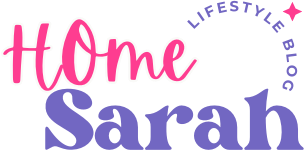Building a home gym is one of the most practical ways to stay consistent with your fitness routine. It saves travel time, cuts membership costs, and gives you full control over your workout environment. Whether you’re starting small or setting up a complete space, the goal is to invest in equipment that truly supports your fitness goals.
Start with the Basics
Before buying anything, think about what you want to achieve. Strength training, cardio, flexibility, or a mix of all three, your goals should guide your purchases. Start with versatile, space-saving tools that can handle multiple workouts instead of bulky single-use machines.
Essential Strength Training Equipment
Strength training is the foundation of most home workouts. The right tools help you build endurance and tone your body efficiently. Here are a few essential items to consider:
- Dumbbells – Adjustable sets save space and allow progressive weight training.
- Resistance bands – Great for warm-ups, mobility work, and strength exercises.
- Barbell and bench – Ideal for squats, presses, and deadlifts to engage multiple muscle groups.
- Kettlebells – Perfect for power moves like swings and snatches that build strength and stamina.
If you’re setting up on a budget, look for used exercise equipment from reliable sellers. Many lightly used items perform just as well as new ones but cost a fraction of the price. This approach lets you build a quality setup without overspending.
Cardio Equipment That Fits Your Space
Cardio training supports heart health and endurance. While large machines are common, compact options are available for smaller spaces. Some effective choices include:
- Treadmills or stationary bikes – Great for steady-state or interval training.
- Jump ropes – Simple, portable, and highly effective for quick cardio sessions.
- Foldable treadmills or rowing machines – Offer full-body workouts without taking up much room.
When buying used exercise equipment, always inspect it for wear and ensure it’s safe and functional. Checking for a valid warranty or maintenance record can help you avoid repair costs later.
Accessories to Enhance Your Routine
Accessories make your workouts more comfortable and organized. Even small additions can improve your training experience. Key accessories include:
- Yoga mat – For stretching, floor exercises, and stability.
- Foam roller – Helps with post-workout recovery.
- Pull-up bar – Strengthens arms, shoulders, and back.
- Mirrors – Assist in maintaining correct form.
- Storage racks or wall hooks – Keep your space clutter-free and safe.
These small touches turn your workout area into a motivating, well-structured environment.
Setting Up the Space
The layout of your gym affects how often you’ll use it. Choose a spot with good ventilation and, if possible, natural light. Keep heavy equipment against walls and lighter gear within easy reach. A clean, open area helps you move safely and focus better during workouts.
Maintaining Your Home Gym
Maintenance keeps your equipment reliable and your space hygienic. Wipe down weights and mats after use, check moving parts regularly, and tighten bolts when needed. Proper care ensures your gear lasts longer and performs smoothly.
Conclusion
A great home gym doesn’t need to be complicated or expensive. Focus on essential, versatile tools that match your goals, and use your space wisely. With the right mix of strength, cardio, and recovery equipment, you can build a workout zone that’s convenient, motivating, and built to last.

